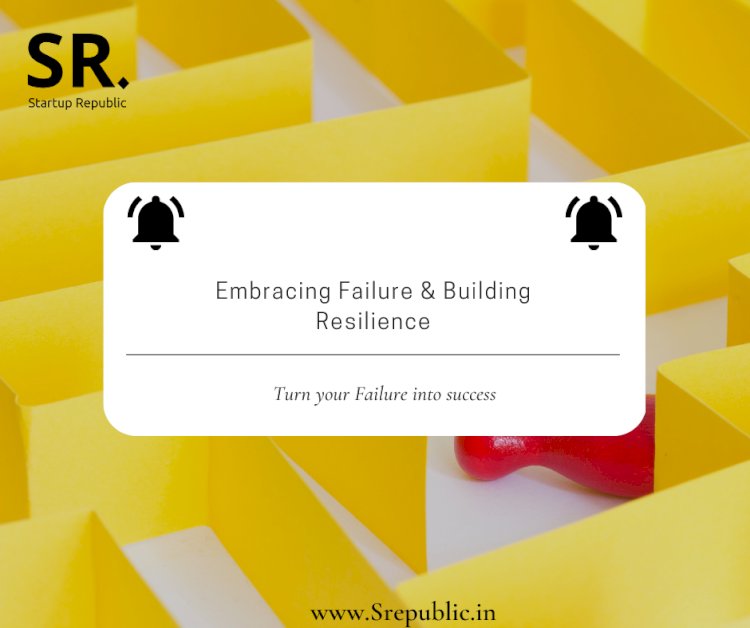
How to Launch Your Startup on a Shoestring Budget: A Beginner’s Guide to Bootstrapping Success
Dreaming of building your own business, but the thought of venture capital and massive investments feels like a distant fantasy? You’re not alone. Many aspiring entrepreneurs believe they need a fortune to get started. The good news? That’s simply not true!
Launching your startup on a shoestring budget is not just possible; it’s a proven path to building resilient, customer-focused businesses. This approach, often called bootstrapping, means funding your business primarily through personal savings, early sales, and minimal external investment. It forces creativity, efficiency, and a deep understanding of your customers – qualities that can be incredibly valuable in the long run.
This comprehensive guide will walk you through the essential steps, strategies, and mindset shifts required to turn your brilliant idea into a thriving business, even if your wallet feels a little light.
Understanding the "Shoestring Budget" Mindset: Embrace Bootstrapping
Before diving into the practicalities, it’s crucial to adopt the right mindset. Bootstrapping isn’t about being cheap; it’s about being resourceful, lean, and smart with every dollar (or lack thereof).
What is Bootstrapping?
Bootstrapping means starting and growing a business using only existing funds (like your savings) and revenue generated by the business itself. It avoids reliance on outside investors like venture capitalists or angel investors, at least in the early stages.
Key Benefits of Bootstrapping:
- Full Control: You retain 100% ownership and decision-making power. No investors dictating your direction!
- Forced Efficiency: Limited funds mean you have to be innovative and prioritize spending on what truly matters.
- Customer Focus: To generate early revenue, you must quickly validate your idea and deliver real value to customers.
- Reduced Risk: Less debt or equity given away means less pressure and a more sustainable growth path.
- Greater Flexibility: You can pivot and adapt quickly without needing external approval.
The Lean Startup Philosophy
Central to launching on a shoestring is the Lean Startup methodology. This approach, popularized by Eric Ries, advocates for:
- Build-Measure-Learn Loop: Quickly create a Minimum Viable Product (MVP), get it into customers’ hands, gather feedback, and iterate.
- Validated Learning: Focus on what customers actually want, not what you think they want.
- Continuous Innovation: Treat your business as a series of experiments to constantly improve and adapt.
By embracing this mindset, you’re not just saving money; you’re building a stronger, more adaptable business from the ground up.
Step 1: Validate Your Idea, Not Your Wallet
Before you spend a single dollar, ensure your idea has a market. This is the ultimate cost-saving step.
1. Identify a Real Problem & Solution
- Don’t start with a product; start with a problem. What pain point are you solving for a specific group of people?
- Talk to potential customers. Conduct informal interviews. Ask them about their challenges, how they currently solve them, and what they would pay for a better solution. This costs nothing but time.
- Look for existing solutions. If others are trying to solve it, it confirms the problem exists. Can you do it better, cheaper, or for a different niche?
2. Define Your Minimum Viable Product (MVP)
Your MVP is the smallest possible version of your product or service that still delivers core value and can be launched to early customers. Its purpose is to gather feedback and validate your core assumptions, not to be perfect.
Examples of MVPs:
- Service-based: Offer your service manually at first (e.g., personal shopping, web design, coaching).
- Software/App: A simple landing page explaining the concept, collecting email sign-ups, or a basic functional prototype with just one key feature.
- Physical Product: A handmade prototype, a small batch produced on demand, or even just detailed mock-ups and a pre-order system.
Key Principle: The goal is to learn, not to earn big profits immediately. Build just enough to test your idea.
Step 2: Leverage Free & Low-Cost Tools and Resources
In today’s digital age, there’s an incredible array of tools available that can replace expensive software and services.
1. Productivity & Collaboration
- Google Workspace (Free Tier / Basic Plan): Gmail for professional email, Google Docs/Sheets/Slides for documents, Google Drive for storage, Google Meet for video calls.
- Trello / Asana (Free Plans): Project management and task tracking.
- Slack (Free Plan): Team communication.
- Zoom (Free Basic Plan): Video conferencing (limited meeting duration).
2. Design & Branding
- Canva (Free Plan): Easy-to-use graphic design for social media, presentations, basic logos, flyers.
- Unsplash / Pexels / Pixabay: High-quality, free stock photos.
- GIMP / Krita: Free alternatives to Photoshop for more advanced image editing.
- Coolors.co / Adobe Color: Tools for choosing professional color palettes.
- Google Fonts: A vast library of free, high-quality fonts.
3. Website & Online Presence
- WordPress.org (Self-hosted): Free content management system. You’ll need to pay for hosting and a domain name (usually less than $100/year combined).
- Strikingly / Carrd (Free/Low-Cost Plans): Simple one-page websites or landing pages to quickly establish an online presence.
- Mailchimp (Free Plan): Email marketing for up to 2,000 subscribers. Great for building an audience and sending newsletters.
- Social Media Platforms (Free): Facebook, Instagram, LinkedIn, X (Twitter), TikTok, Pinterest – choose the ones most relevant to your audience.
4. Communication & Customer Support
- Google Voice (Free): Get a free phone number that forwards to your personal phone.
- Calendly (Free Plan): Allow customers to book appointments with you easily.
- Live Chat (Free Options): Many website builders offer basic live chat features to answer customer questions in real-time.
5. Financial Management
- Wave Accounting (Free): Accounting software for invoicing, expense tracking, and basic reporting.
- Google Sheets / Excel: Simple spreadsheets for budget tracking and financial projections.
Pro Tip: Don’t get caught up in analysis paralysis over tools. Pick one or two essential ones for each category and start using them. You can always upgrade later if your needs grow.
Step 3: Marketing & Sales on a Shoestring Budget
Getting customers without a huge marketing budget requires creativity and consistency. Focus on organic, inbound strategies.
1. Content Marketing (Your Expertise as Currency)
- Blog: Write articles related to your industry, solving problems your target audience faces. This builds authority and attracts organic search traffic.
- YouTube: Create helpful video tutorials, product demos, or answer common questions.
- Podcasting: If you enjoy speaking, share insights or interview experts in your niche.
- Lead Magnets: Offer a free e-book, checklist, or template in exchange for email sign-ups.
Key Principle: Provide value first. Don’t just sell; educate and help.
2. Social Media Marketing (Organic Reach)
- Choose Wisely: Focus on 1-2 platforms where your target audience spends the most time.
- Engage, Don’t Just Post: Respond to comments, ask questions, join relevant groups.
- Share Value: Mix promotional content with helpful tips, industry news, and behind-the-scenes glimpses.
- Utilize Features: Use Stories, Reels, Live videos to increase engagement.
- Hashtags: Research relevant hashtags to increase discoverability.
3. Email Marketing (Direct Connection)
- Build Your List: Encourage website visitors and social media followers to sign up for your newsletter (using Mailchimp’s free plan).
- Provide Value: Send exclusive content, early access to products, special offers, or helpful tips.
- Nurture Leads: Guide potential customers through their journey with a series of automated emails.
4. Networking & Community Building
- Online Forums/Groups: Participate in relevant LinkedIn groups, Facebook groups, or Reddit communities. Offer genuine help and insights, not just sales pitches.
- Local Meetups/Events: Attend industry events, chamber of commerce meetings, or local startup gatherings.
- Collaborate: Partner with complementary businesses for cross-promotion.
5. Public Relations (DIY PR)
- Craft Your Story: Develop a compelling narrative about your startup. What makes it unique?
- Reach Out to Local Media: Target local newspapers, blogs, or podcasts that cover business or your specific industry.
- HARO (Help a Reporter Out): Sign up for free alerts from journalists looking for sources for their stories. If your expertise matches, you could get free press.
Remember: Consistency is key. It takes time to build an audience and generate leads with organic marketing.
Step 4: Operational Efficiency & Cost Savings
Every dollar saved is a dollar earned. Ruthlessly cut unnecessary expenses.
1. Embrace Remote Work
- No Office Rent: A significant saving! Work from home, co-working spaces (pay-as-you-go), or coffee shops.
- Reduced Overhead: No utility bills, office supplies, or expensive equipment to buy for a physical space.
- Access to Global Talent: If you do need to hire, you’re not limited by geography.
2. Outsource Wisely, Don’t Over-Outsource
- Focus on Core Competencies: Do what you’re best at. For tasks outside your expertise (e.g., complex legal, advanced coding, professional design), consider outsourcing.
- Freelance Platforms: Upwork, Fiverr, PeoplePerHour can connect you with freelancers for specific tasks (e.g., logo design, short-term data entry, content writing).
- Define Scope Clearly: Be very specific about what you need done to avoid scope creep and unexpected costs.
- Start Small: Test freelancers with smaller projects before committing to larger ones.
3. DIY Where Possible
- Legal & Admin: Use online templates for basic contracts (e.g., Terms of Service, Privacy Policy). Consider forming an LLC yourself if your state allows for simple online filing. Consult a lawyer when necessary, not for every minor question.
- Customer Support: Handle initial customer inquiries yourself. Set up a simple FAQ page on your website.
- Bookkeeping: Use free software like Wave Accounting or a simple spreadsheet until your finances become too complex.
4. Barter and Exchange
- Skill Exchange: Can you offer your services to another startup in exchange for theirs (e.g., web design for marketing advice)?
- Leverage Your Network: Ask friends, family, or mentors for advice or small favors instead of paying for consultations.
5. Delay Non-Essential Purchases
- Do you really need that fancy software, new laptop, or extensive marketing campaign right now? Prioritize purchases that directly contribute to your MVP, customer acquisition, or revenue generation.
- Used Equipment: If you need physical equipment, check used marketplaces or rental options first.
Step 5: Funding Your Growth (Beyond the Initial Launch)
While bootstrapping means starting lean, at some point, you might need a bit more capital to scale.
1. Self-Funding (Your Savings / "F&F")
- Personal Savings: The most common form of bootstrapping. Only use what you can afford to lose.
- Friends & Family: If you approach them, treat it professionally: define terms, repayment schedules, and equity if applicable.
2. Pre-Sales & Crowdfunding
- Pre-Orders: If you have a tangible product, allow customers to pre-order before production begins. This validates demand and provides upfront cash.
- Crowdfunding Platforms (Kickstarter, Indiegogo): For product-based businesses, these platforms allow you to raise funds from a large number of individuals in exchange for rewards or early access. This is also a great marketing tool.
3. Grants & Competitions
- Startup Grants: Look for government grants, university programs, or non-profit organizations that support specific types of businesses (e.g., tech, social impact, women-owned).
- Business Plan Competitions: Many accelerators, universities, and organizations host competitions with cash prizes or incubation support.
4. Small Business Loans (Later Stage)
- Once you have some revenue and a proven business model, you might qualify for traditional small business loans from banks or credit unions. These are usually less dilutive than equity investments.
- SBA Loans (in the US): Government-backed loans with favorable terms.
Important Note: The goal of bootstrapping isn’t to never raise outside capital, but to prove your concept and build traction before you do. This puts you in a much stronger negotiating position if and when you decide to seek investors.
Conclusion: Your Shoestring Journey Starts Now!
Launching a startup on a shoestring budget is a challenging yet incredibly rewarding journey. It demands discipline, creativity, and an unwavering focus on solving real customer problems. By adopting a lean mindset, leveraging free tools, being resourceful with marketing, and operating efficiently, you can turn your entrepreneurial dream into a tangible reality.
Don’t wait for the perfect moment or a huge investment. The best time to start building your future is now. Embrace the limitations, learn from every step, and let your passion drive you forward. Your shoestring budget isn’t a barrier; it’s your secret weapon for building a truly resilient and customer-centric business.
Ready to take the leap? Start small, learn fast, and grow smart!



Post Comment